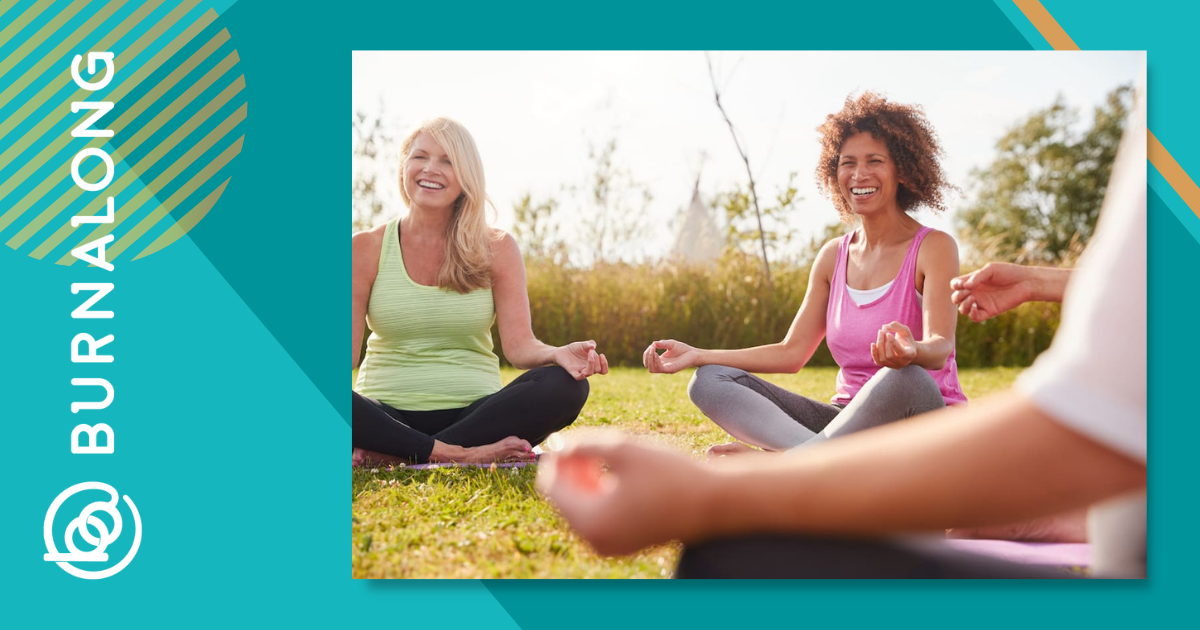After a tumultuous and unprecedented year, we’ve come to realize the direct connection stress can have on our overall mental health and wellness. While things do seem to be getting back to normal, such prolonged exposure to stressful events has left many of us with anxiety, depression, and other mental health difficulties that will linger long past the pandemic. In fact, nearly 40 percent of adults in the US reported anxiety or depression in 2020 (up from 10 percent in 2019), while prescriptions used to treat such mental health conditions increased 34 percent in 2020 alone.
This rise in medication is on top of the 83 percent of Americans who reported suffering from work-related stress. That’s a staggering percentage of us who are suffering. Yet while stress is an intensely personal experience, it has collective workplace impacts. This year, 91 percent of employees said that they believe stress is impacting the quality of their work, while one recent study estimated the collective loss this causes around $300 billion a year.
The good news is stress can be treated, mitigated, or headed off with strong wellness habits. For the rest of this post, let’s dive into what impact stress has on the body, how to use meditation as a way to manage stress, and how to start implementing these tips into our wellness habits.
The Effect Stress Has on the Body
Stress triggers what is known as our fight-or-flight response – our body’s natural reaction to a perceived threat. When we encounter stress, our sympathetic nervous system gets activated and it sends signals to the adrenal glands to release adrenaline into our bloodstream. When the adrenaline hits us it can cause the following symptoms:
|
|
Burnalong instructor, Sasha Rydlizky, a Salt Lake City-based dancer, yoga, and meditation teacher, says that when our bodies are under constant stress, the symptoms mentioned above can become chronic. This can take a debilitating toll on our health and wellness — both physically and mentally.
How and Why Meditation Helps Combat Stress
Meditation is a technique that can be used to help improve mindfulness and promote levels of calm and tranquility. According to several published studies, meditation has been proven to activate the body’s parasympathetic nervous system – the part of the body that is associated with relaxation.
In other words, when we begin to feel the symptoms of stress, practicing meditation techniques forces our nervous system to switch to a parasympathetic state before our stress levels become too overwhelming to handle.
Through meditation, participants are asked to stay still, focus on their breathing, and to accept their thoughts, regardless of what they may be as opposed to trying to clear them from their mind or shut them down completely. This is because the goal of meditation is to be able to help you differentiate between thoughts that are helpful to you and those that are not.
To do this, Radlizky suggests acknowledging and accepting your negative, intrusive thoughts — such as a looming deadline or work project — and then redirecting your mind to either your breathing or another topic that makes you calm. You can check out what this looks like by taking one of her classes on the Burnalong platform or looking through the many other mindfulness and meditation offerings available.
Check out our webinar with mental health experts Dr. Jess Williams and Bianca Coleman for more tangible suggestions on supporting employee mental health.
Next, we will dive into understanding a little more about how to build meditation habits, how to implement meditation into your corporate wellness offerings, and answer some frequently asked questions about meditation.
Types of Meditation
There are two main types of meditation: guided and unguided. Guided meditation involves a teacher or narrator walking you through when to breathe or what to focus on; unguided meditation can be managed by the person meditating and does not follow a specific format.
With both forms of meditation, you will most likely be focusing on your breathing. However, there are some forms or methods of meditation that will have you focus on open awareness, where thinking about your situation or negative thoughts is allowed.
How to Build a Meditation Habit
Building a meditation habit takes time. It also yields different results for everyone. It’s normal for your practice of meditation to vary from day to day, especially when you factor in your stress level and unique circumstances.
If you don’t notice results right away, don’t panic — that’s completely normal. Like any habit, meditation takes time to develop and become a natural part of your wellness practices. Remember, the more you practice, the easier it will become.
To build a meditation habit, here are some friendly tips:
- Find a time that works for your schedule and add it to your daily calendar.
- If possible, link it to an activity you already do every day, such as eating lunch, so when you complete an existing habit, you add in a few moments of the new practice.
- Pick an area that is comfortable to you, easily accessible and keeps you alert. Sitting is often recommended, but if you can stay alert while walking, standing, or laying down, you can do so.
- Start out small and don’t overwhelm yourself. Five minutes a day is better than nothing at all. If you can’t formally meditate, try to stop and pay attention to what you’re doing. If you’re washing dishes, pay attention to the temperature of the water or what the dish soap smells like.
- Find someone who can help keep you accountable. Burnalong offers classes you can take together so you can encourage your colleagues and social circles to stick to this new habit! Working together with a friend or partner can not only help you stay on track with your goals, but it can also help you feel less isolated.
How to Include Mediation in Corporate Wellness Programs
While individuals can build personal meditation habits, there are some great ways that you can weave in moments of mindfulness or mediation into your corporate culture too.
- Have designated wellness breaks throughout the week where you encourage your teams to spend time meditating–even if just for a few moments!
- Start a meeting with a short, guided meditation to help everyone feel more focused and grounded.
- Implement a corporate wellness challenge that is centered around meditation and mindfulness. See who can complete the most classes or minutes on Burnalong and offer a grand prize for the winning person (or team)!
- Loop in your c-suite to encourage widespread adoption. Have one of your executives pick a class that the rest of the organization is invited to join, live.
Frequently Asked Questions Around Meditation
While building a mediation habit is the first step, there are still many unknowns for beginners. Rydlizky took some time to address some FAQs, if you will, for developing a meditation practice.
- If you set an alarm to end your session, choose one that is calm and gentle instead of loud and abrupt.
- Set a mantra – a phrase you repeat daily that has an intention you’d like to make for yourself or your day. You can say this at any point during the day.
- Remember that you can always “begin again.” If you lose focus and get distracted, it’s okay. Redirect your focus and start over.
- To that point, it is normal to get distracted! Remind yourself that your goal is to become better at meditation, which is why you practice. You don’t have to become an expert.
- Your body will usually be more receptive to meditation after you’ve exercised, but there is no harm working out before or after you decide to meditate.
- Remember, it’s normal to feel tired after meditating. Our bodies aren’t used to achieving a level of relaxation outside of what we’d get during the night.
- Notice what your body is doing and how it feels while you meditate. You might notice an itch or two; try acknowledging it first rather than jumping to action. However, if you need to itch, by all means do.
Final Thoughts
With the continued rise in mental health conditions, and the shocking increase in healthcare costs for employers to provide support for employees, it is important to find ways to manage stress holistically. Adding a few moments of meditation each week can have a positive impact on your overall wellness and mental health, leading to increased productivity, increased adaptability, and higher retainment rates.
Additionally, a focus on mediation in corporate wellness programming is an inclusive and accessible activity that all of your employees can engage with. Our own platform usage can attest to the increased demand for categories like meditation. Over the past year, we’ve seen nearly 30 percent of all classes taken on Burnalong sitting in our specialty categories including mindfulness, meditation, stress management, chronic illness support, and more.
If you want to learn more about our specialty programming and ways to incorporate meditation into your corporate culture, schedule a demo today. We would love to help you and your company practice the art of meditation and improve your overall wellness with over 45 categories of classes so everyone can benefit and participate.






